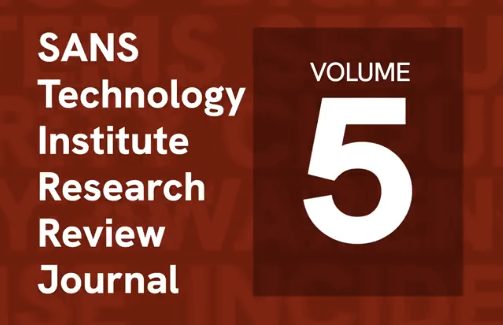Handler on Duty: Jan Kopriva
Threat Level: green
Podcast Detail
SANS Stormcast Tuesday, August 26th, 2025: Decoding Word Reading Location; Image Downscaling AI Vulnerability; IBM Jazz Team Server Vuln
If you are not able to play the podcast using the player below: Use this direct link to the audio file: https://traffic.libsyn.com/securitypodcast/9586.mp3

Decoding Word Reading Location; Image Downscaling AI Vulnerability; IBM Jazz Team Server Vuln
00:00
My Next Class
| Application Security: Securing Web Apps, APIs, and Microservices | Orlando | Mar 29th - Apr 3rd 2026 |
| Network Monitoring and Threat Detection In-Depth | Amsterdam | Apr 20th - Apr 25th 2026 |
Reading Location Position Value in Microsoft Word Documents
Jessy investigated how Word documents store the last visited document location in the registry.
https://isc.sans.edu/diary/Reading%20Location%20Position%20Value%20in%20Microsoft%20Word%20Documents/32224
Weaponizing image scaling against production AI systems
AI systems often downscale images before processing them. An attacker can create a harmless looking image that would reveal text after downscaling leading to prompt injection
https://blog.trailofbits.com/2025/08/21/weaponizing-image-scaling-against-production-ai-systems/
IBM Jazz Team Server Vulnerability CVE-2025-36157
IBM patched a critical vulnerability in its Jazz Team Server
https://www.ibm.com/support/pages/node/7242925
Discussion
New Discussions closed for all Podcasts older than two(2) weeks
Please send your comments to our Contact Form
| Application Security: Securing Web Apps, APIs, and Microservices | Orlando | Mar 29th - Apr 3rd 2026 |
| Network Monitoring and Threat Detection In-Depth | Amsterdam | Apr 20th - Apr 25th 2026 |
| Application Security: Securing Web Apps, APIs, and Microservices | San Diego | May 11th - May 16th 2026 |
| Network Monitoring and Threat Detection In-Depth | Online | Arabian Standard Time | Jun 20th - Jun 25th 2026 |
| Network Monitoring and Threat Detection In-Depth | Riyadh | Jun 20th - Jun 25th 2026 |
| Application Security: Securing Web Apps, APIs, and Microservices | Washington | Jul 13th - Jul 18th 2026 |
| Application Security: Securing Web Apps, APIs, and Microservices | Las Vegas | Sep 21st - Sep 26th 2026 |
Podcast Transcript
Hello and welcome to the Tuesday, August 26, 2025 edition of the SANS Internet Storm Center's Stormcast. My name is Johannes Ulrich, recording today from Baltimore, Maryland. And this episode is brought to you by the SANS.edu Bachelor's Degree Program in Applied Cybersecurity. Jesse today summarized some interesting research that he performed looking into the reading location position value in Microsoft Word documents. What this refers to is if you open a document that you have looked at before, you may get a pop-up telling you, hey, do you just want to basically continue where you left off last time you opened this document? Well, it turns out that this position is stored inside the registry, but it's not quite that straightforward to decode the value that you find in the registry. And that's essentially what Jesse is walking you through here, figuring out how to decode the value defined in the registry, how to link it to a particular position in the document. Interesting way this is sort of being determined here and some interesting experiments as well may be useful if you have to prove, for example, that a user has read a particular part of the document or maybe modified a particular part of the document that they visited just when they last time closed the document. And the Trail of Bits blog has an interesting attack against AI systems that are processing images among other data. The problem there or the feature really that they're exploiting is downscaling. Quite often when you are loading an image into an AI system, the AI system will then reduce the resolution in order to basically allow for more efficient processing of the image. But what the Trail of Bits blog is exploiting here is that, well, of course, as you're downscaling, there are subtle changes to the image. And by preparing an appropriate image, it's actually possible that there will be text overlaid to the image as you're downscaling it. And then we have that usual problem that we have so often in AI systems, prompt injection because they just can't sort of keep data and code separate. And of course, that classic bad pattern sort of kicks in here and an attacker is able to essentially inject a prompt just by uploading an image or by tricking the victim into uploading the image because in the original resolution, the text will not be visible and there won't be anything obviously wrong with the image. Trail of Bits suggests that you should refrain from downscaling images, that instead you just limit the allowable resolution of the image. That way, a user uploading an image would first have to downscale it themselves, which of course would first of all make the algorithm a little bit less predictable to the attacker. And secondly, the victim may then be able to actually see the text. Even though in the example that Trail of Bits has here as part of their blog, the text is not very visible to a human. And there have actually been similar attacks also, where basically you have text that's not very visible to a human but can be seen and interpreted by the AI tool that interprets the image. Well, basically bypass sort of any kind of cursory, at least visible, this inspection of the image. And IBM is advising users to quickly patch their IBM jaz team server. The vulnerability being addressed in the latest update that was just released well, Friday last week, allows for an unauthenticated remote attacker to update server configuration files, which as IBM puts it, could lead to perform unauthorized actions. I call it remote code execution, and the CVSS score of 9.8 kind of speaks to that. They also say that subsequently it will lead to a denial of service condition, which of course, if you do have unauthorized actions taking place first, is probably the least of your problems. Well, that is it for today. So thanks for listening. Thanks for liking, subscribing, and recommending this podcast. And talk to you again tomorrow. Bye.










